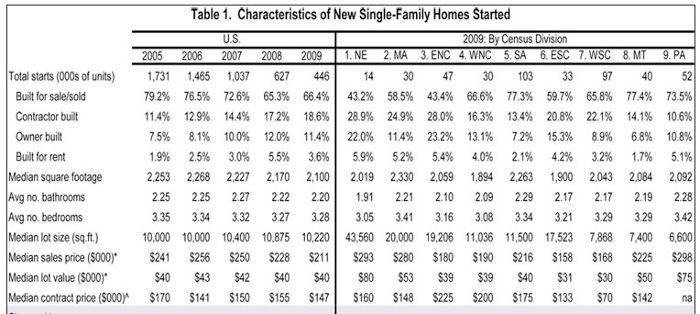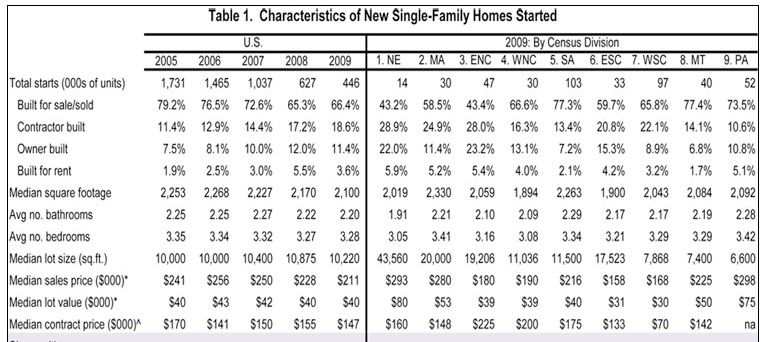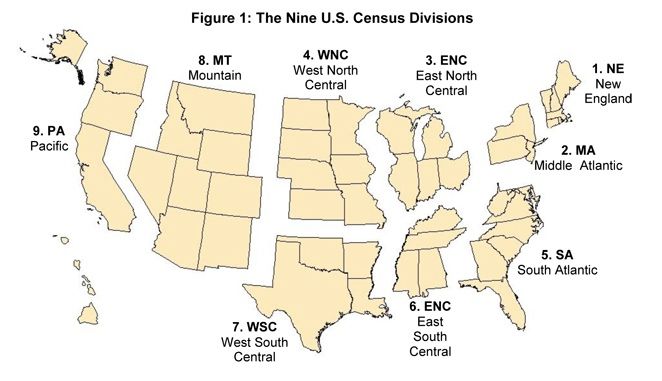
Last month, the National Association of Home Builders noted that Census Bureau data culled from the 2009 edition of the agency’s American Housing Survey showed that first-time buyers’ preference for relatively small and modestly priced homes has become an increasingly important market for homebuilders.
Of course there are other dimensions to the data that NAHB’s Housing Economics team, in a study titled “Characteristics of Single-Family Homes Started in 2009,” were able to illuminate. One area of particular interest, NAHB notes, is the trend toward smaller homes, not just among first-time buyers but among home buyers in general, and data indicating that the small-home trend will last not just for the duration of the downturn but for an indeterminate period beyond it.
Median home size peaked in 2006 at 2,268 sq. ft., then dropped in consecutive years through 2009, when it landed at 2,100 sq. ft., the study shows. Improved economic conditions might drive home size back up slightly, but Paul Emrath, NAHB’s vice president for survey and housing policy research, cites current trends – including the desire to minimize energy costs, the limited amounts of equity in existing homes available to roll into a new one, tightened credit standards, less emphasis on the investment motive for buying a home, and an increased share of homes sold to first-time buyers – that are expected linger and keep the market for smaller homes relatively strong.
“Not all of these trends are likely to reverse themselves immediately at the end of a recession,” Emrath said in a recent NAHB news release.
The energy efficiency factor
These observations mesh fairly well with those of Melina Duggal, a demographics specialist with real estate consulting firm Robert Charles Lesser & Co. who spoke about housing market trends at the 2010 Urban Land Institute Fall Meeting last week in Washington, D.C.
Duggal’s analysis indicates, for example, that interest in energy efficiency, as well as in low-VOC finishes and other building components that can make interiors healthier for occupants, was on the increase in 2006 but fell off during the downturn. Duggal told ULI Fall Meeting attendees that the market for green homes will bounce back, according to a recent Builder magazine post, although NAHB’s Housing Economics report notes that the downturn seems to have sustained interest in reducing energy costs.
Duggal did point out, however, that, like the Housing Economics findings, her research shows that smaller houses are here to stay, along with a trend toward smaller lots for single-family detached homes. RCL & Co. data show average lot sizes shrinking from 0.5 acre in 1999 to as small as 0.25 acre now. “We see nothing that says builders are going to start offering larger lots again,” she said.
Fine Homebuilding Recommended Products
Fine Homebuilding receives a commission for items purchased through links on this site, including Amazon Associates and other affiliate advertising programs.

8067 All-Weather Flashing Tape

Handy Heat Gun

Affordable IR Camera


























